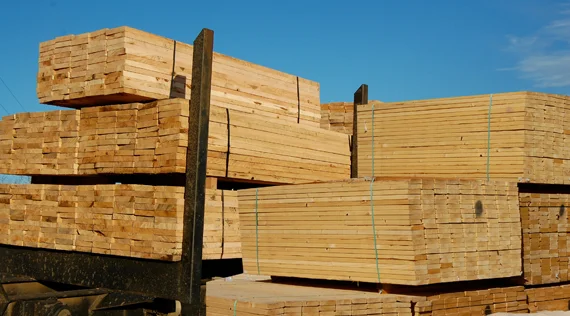
VANCOUVER (Scrap Monster): The Conference Board of Canada, in its recently released industry outlook statement, has stated that likely imposition of duties on softwood lumber imported from Canada may hamper the country’s export growth. The document titled ‘Canadian Industrial Outlook: Canada’s Wood Products Manufacturing Industry’ states that lumber duties are likely to cap export growth, thereby impacting industry’s balance sheet.
The not-for-profit research organization notes that Canada’s wood products manufacturers are likely to post highest levels of pre-tax profits since 2004. The pre-tax profits are expected to total around $1.4 billion in 2016. It must be noted that pre-tax profits had registered decline during the previous year.
According to Michael Burt, Director, Industrial Trends, no new agreement related to softwood lumber trade between the Canada and the US is in sight presently. Failure to reach a bilateral agreement would lead to imposition of trade actions such as imposition of additional duties on lumber imported from Canada or restrictions on lumber import volumes. These restrictions are likely to result in increased cost of exports to the US. Canadian softwood lumber producers are likely to feel the heat as softwood lumber accounts for more than 50% of the country’s total wood products exports into the US.
The report outlines decline in Chinese demand as another key factor that may affect industry margins in 2017. Trade statistics indicate that Canadian wood product exports to China have dropped significantly by nearly one-fifth over the past year. The slowdown in Chinese economy and increased competition from other international market players has led to the huge drop in demand for Canadian wood products. In addition, the aging workforce in country’s wood products industry may also hit the industry’s bottom line growth.
The imposition of US duties may impact lumber producers in Central and Eastern Canada, whose exports are mainly destined to the US market. Western Canadian producers may also see the impact. However, diversification into new markets such as Asia by producers in region is likely to reduce the impact. Recently, the B.C forest industry and government representatives had been on a mission to find new markets for Canadian wood products in Asian countries including China, Japan and India, in order to reduce over-dependency on the US.
The duties are unlikely to have substantial impact on big Canadian lumber firms. As per sources major Canadian lumber companies including West Fraser, Interfor and Canfor has increased its presence in the US by owning more number of US sawmills during recent times. In fact, Interfor produces more lumber from its US mills than from its Canadian mills. However, small ticket producers would be affected severely.
The sharp rise in lumber prices and increased production may result in improved industry margins during 2016. However, anticipated imposition of tariffs and quota restrictions by the US on Canadian lumber may slow export growth, thereby moderating industry margin. On the brighter side, strong US economic recovery is likely to cause stronger housing demand in that country. As domestic US lumber industry may not be able to meet this increased demand, the country may have to meet a good portion of its demand through imports from Canada and other countries. The Conference Board of Canada predicts that Canada’s wood product industry will register stronger financial performance between 2018 and 2021.
| Copper Scrap View All | |
| Alternator | 0.31 (0) |
| #1 Copper Bare Bright | 3.65 (0.02) |
| Aluminum Scrap View All | |
| 356 Aluminum Wheels (Clean) | 0.71 (-0.01) |
| 6061 Extrusions | 0.62 (-0.01) |
| Steel Scrap View All | |
| #1 Bundle | 475.00 (0) |
| #1 Busheling | 495.00 (0) |
| Electronics Scrap View All | |